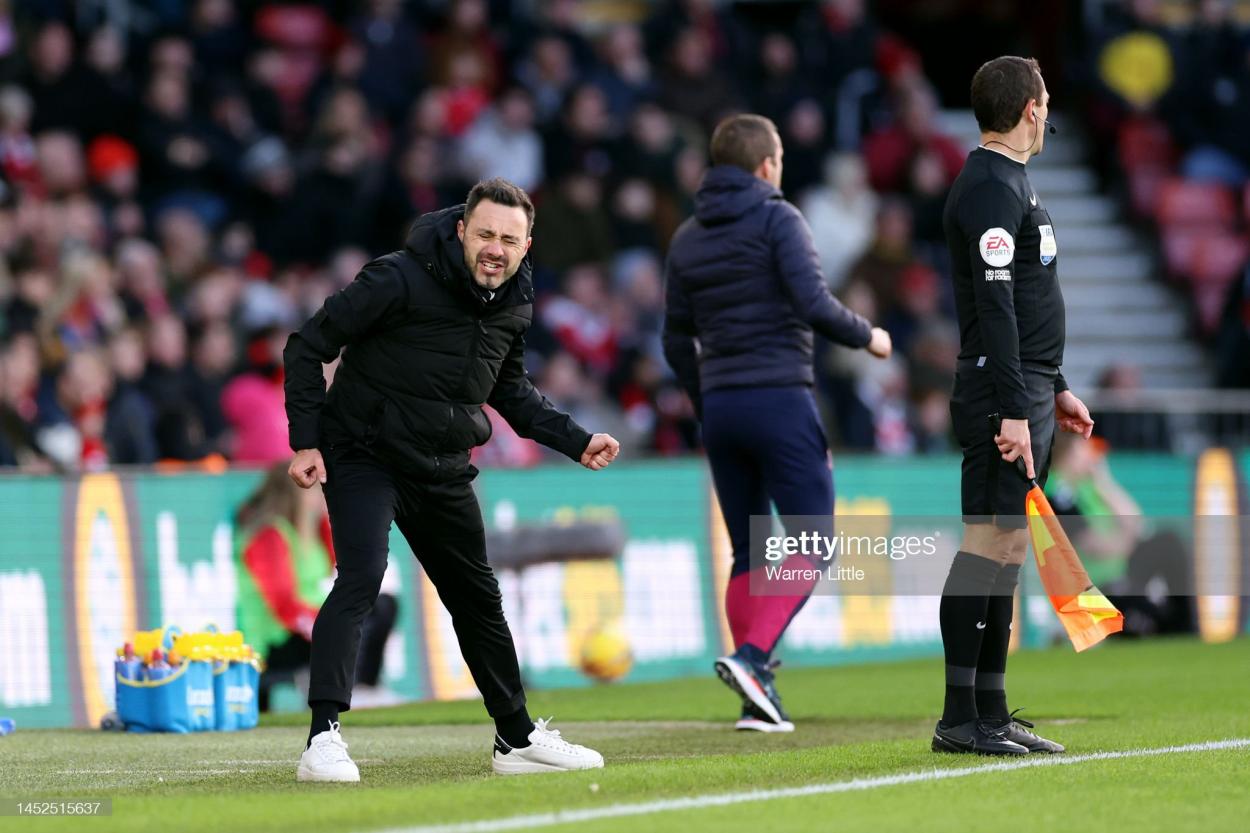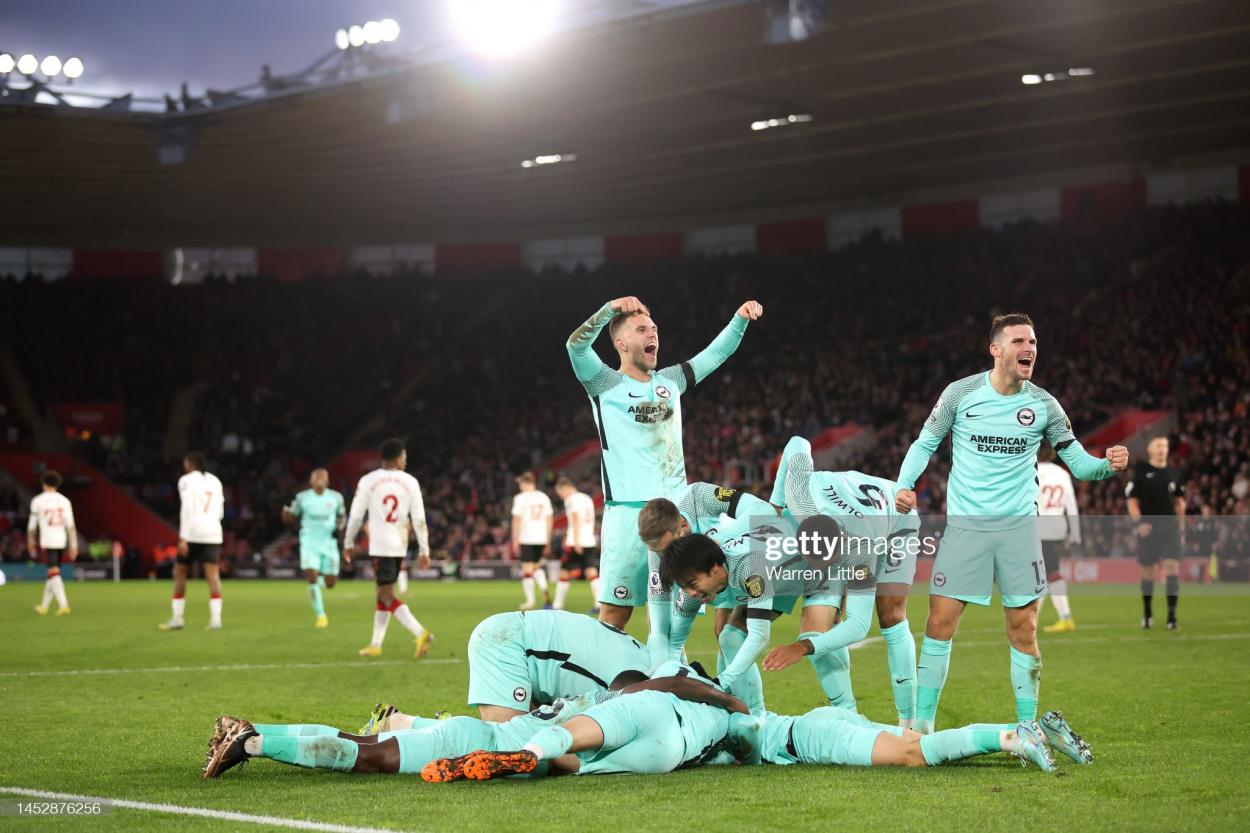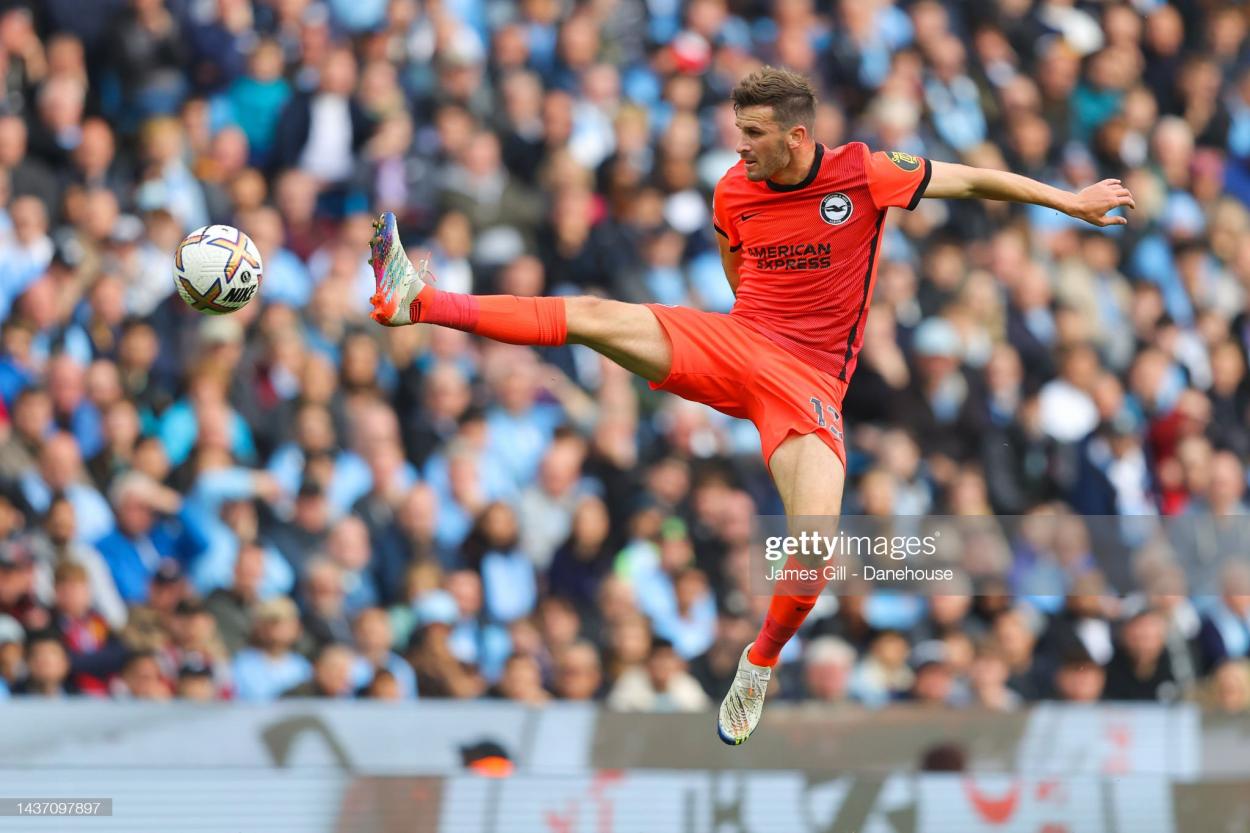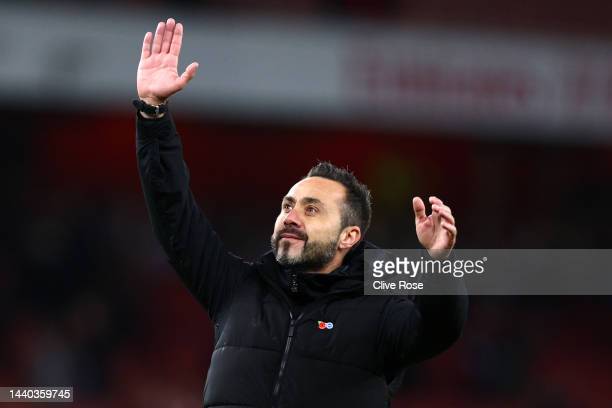Roberto De Zerbi has taken to the Premier League better than anyone could have predicted and has his Brighton side playing an exciting, potent, and aggressive brand of football.
So far, his most impressive achievement has been seemingly breaking the curse that haunted the side over the previous three seasons: putting away chances and finishing off games. This is not the only change, however, as the Italian has used the foundations left by Graham Potter, before his departure to Chelsea, to impose his stamp on a new and developing Brighton side.
This piece will explore some of the tactical changes that have seen a shift in both performances and results in the Premier League and will look at the hopes for the side going into the second half of the season.

-
Change in Shape
One of the major changes in approach from De Zerbi has seen a shift from a three to a four-man defence. Whilst the personnel has remained similar, the shift in shape has allowed for more progressive play: sacrificing some of the defensive stability that Potter's side had become renowned for in order to place more emphasis on attacking with wingers and a number ten in between the lines.
Pervis Estupinan has been utilised as an attacking left back, marauding up the wing where he provides overlapping runs and options to feet for Kaoru Mitoma.
Meanwhile, Joel Veltman at right-back provides the security of an "out and out" defender having specialised as a right centre-back throughout his career. On the attack, the right back begins to pull inside and takes up a role in the middle of the park – filling the hole left by the forward runs from the double pivot in midfield. This was most evident during the spell where Pascal Gross filled in at right back, scoring twice as he stepped into midfield against Chelsea and Wolves.
The balance across the backline has allowed De Zerbi to quickly apply his philosophy on the side and the difference between his approach and that of Potter is becoming more transparent every week.

The technical ability of Lewis Dunk, Levi Colwill, and Adam Webster is an excellent tool for the Italian, emphasised in his belief that the defence is the most important aspect of a firing attack. Inviting the press through short and direct passing followed by periods of standing on the ball, drags in the opponents and creates space in the midfield for the double pivot to collect the ball to feet and quickly turn a defensive passage into a counterattack.
However, the thing that makes the change in system most impressive is that Brighton often struggled to play in a back four under Potter – with six successive defeats sparking a shift to a three at the back, first seen at Arsenal last season. The speed with which the defence has adapted to the change is a credit to their technical ability and the potential of De Zerbi as a coach.
-
Threat From Out Wide
Playing four at the back gives the freedom for De Zerbi to use his inverted wingers as the key to attacking potency. Something the Albion had been missing over recent periods was a real threat of pace and directness on the wings – a description that Koaru Mitoma epitomises.
The Japanese wide man has adapted remarkably quickly to the premier league and across recent performances, has proved his worth as arguably Brighton's most dangerous threat.
On the other side, De Zerbi has deployed Solly March in a far more forward area and has unearthed his creative and attacking skill. Both wingers can go past defenders or use options in the middle, with Mitoma's dart inside and finish across the goal quickly becoming his trademark.
De Zerbi seems to have discovered March's shooting boots as well, with his thunderbolt against Southampton and smart finish against Everton highlighting his importance both in the system and also as a goal-scoring threat.
A player that is quite symbolic of the change seen under De Zerbi is Adam Lallana. Plagued by injuries in the past few years, he has proved himself a crucial part of the Brighton side recently, through both his technical ability and understanding of the game.
De Zerbi described Lallana as "the teacher" and he has been used just behind the front man to play 'between the lines' and act as the glue between the midfield and forward areas. Similarly to March, he seems to have discovered the knack for scoring that had evaded him for large spells of his Brighton career.
If he can stay fit, he provides the Albion with talent, experience, and attitude that could prove a blessing as the season moves on.
Consistency in the Middle
One thing that has not changed is the performances of Brighton's central midfielders: Moises Caicedo, Alexis Mac Allister, and Pascal Gross. All three have blossomed under both coaches, especially Gross, showing their versatility and skill in all areas of their game.
How long Brighton can keep hold of their double pivot of Mac Allister and Caicedo is a different question, however, whilst they still play in blue and white, Brighton has one of the most consistent and capable partnerships in the league.

Roberto De Zerbi has taken over a Brighton team on the up and has somehow managed to accelerate their progression whilst using the same players, in a league where he had no previous experience. His mentality and passion for the game are clear to see and he seems so driven to improve and progress his side, that the Seagulls will only keep improving and developing both as a footballing unit and a club.
It will be a battle for Brighton to continue their goal scoring, and ruthless performances however the ability to go into every game without fear allows for freedom of expression across the pitch, and the outside hope of Europe, in their current form, is something that Albion fans can dare to dream of.





































